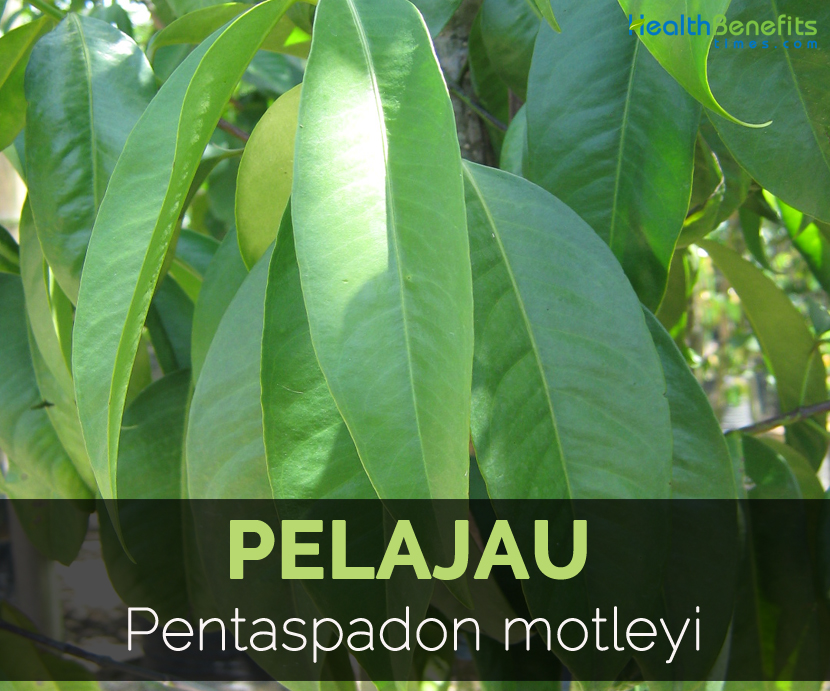| Pelajau Quick Facts | |
|---|---|
| Name: | Pelajau |
| Scientific Name: | Pentaspadon motleyi |
| Origin | Native to Malaysia (peninsular, Sarawak and Sabah); Indonesia (Kalimantan, Irian Jaya, Sumatra), Papua New Guinea (Gulf and Madang Provinces), Bougainville and the Solomon Islands. |
| Colors | Greenish-brown |
| Shapes | Fleshy ovoid, pointed drupe, 3–5 cm by 2–2.75 cm |
Plant description
Pentaspadon motley is a tall tree measuring 51 meters in height and 70 cm dbh with thin spreading buttresses and scaly or grey-brown bark. Leaves are compound, alternate, imparipinnate measuring 10–20 cm long having 7 to 9 dark green leaflets which are pink when young. Leaflets are opposite and about 5–13 cm × 2–6 cm. It has pointed apex and rounded base, penni-veined having 6 to 10 pairs of secondary nerves and hairy domatia in axils of secondary nerves. Flowers are small, cream colored and about 4 mm in diameter. The bisexual flowers have imbricate petals and five fertile stamens that alternates with five sterile staminodes and one celled ovary having short style. Fruit is a drupe which is fleshy ovoid, greenish-brown, 3–5 cm by 2–2.75 cm which contains one large, ovoid and oblong compressed seed.
Traditional uses
- In Sarawak, use the sap as oil for itch, skin diseases and scabies.
- Stems resin is used to calm down itchiness of skin.
Culinary uses
- Consume the fruits fresh, cooked, fried or roasted.
- The kernel offers a pleasant taste when roasted or fried.
- Add the kernels to the soup.
- Boil the fruits.
References:
https://en.wikipedia.org/wiki/Pentaspadon_motleyi
http://www.asianplant.net/Anacardiaceae/Pentaspadon_motleyi.htm
http://www.tropical.theferns.info/viewtropical.php?id=Pentaspadon+motleyi
Comments
comments
